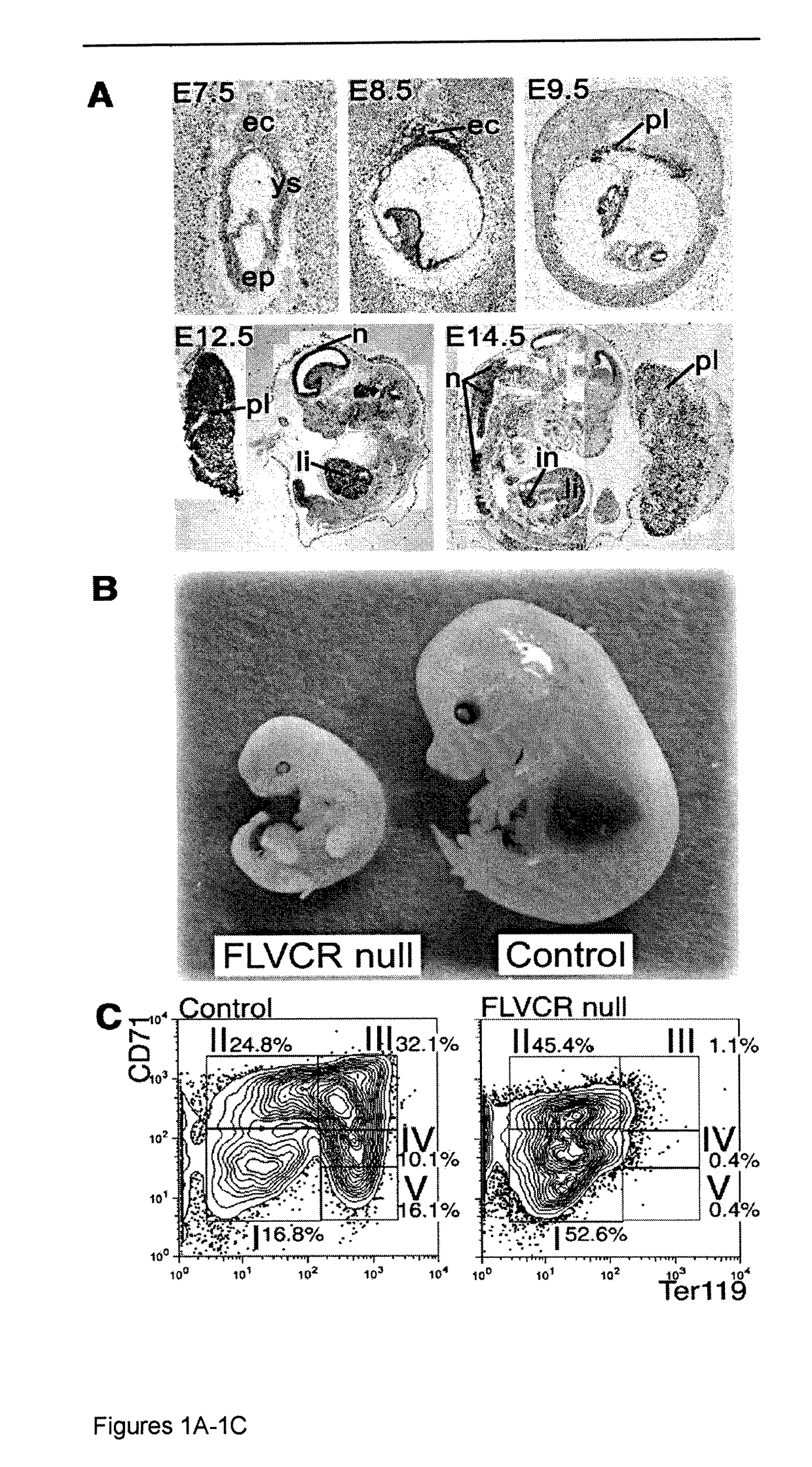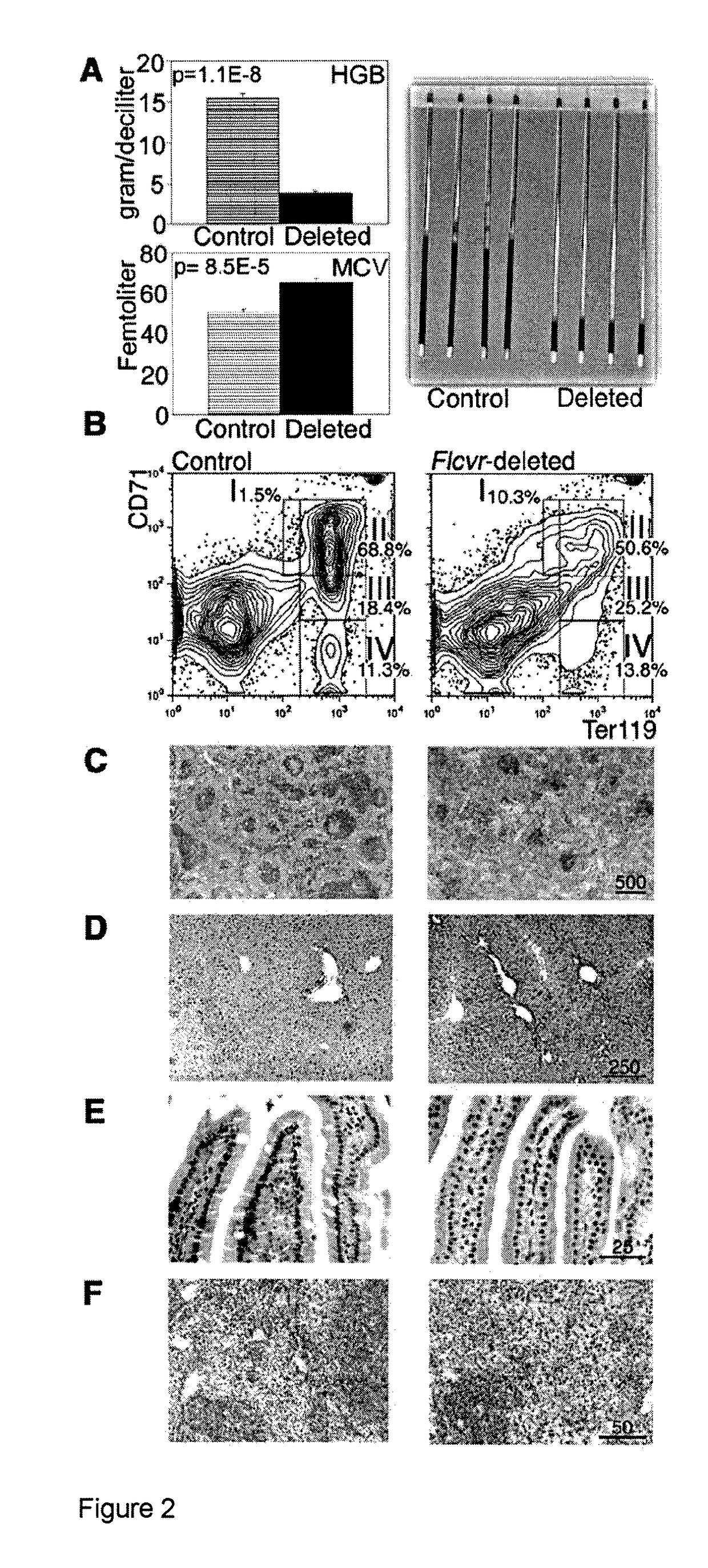Compositions and methods for facilitating heme-iron export from cells
a technology of heme iron and export, which is applied in the direction of drug compositions, peptide/protein ingredients, extracellular fluid disorder, etc., can solve the imbalance of heme relative to globin, the inability to recycle iron to developing red cells, and the inability to free heme to the developing red cells, etc., to achieve the effect of reducing the imbalance, facilitating the recycling of macrophage cells, and maximizing the exit of heme iron
- Summary
- Abstract
- Description
- Claims
- Application Information
AI Technical Summary
Benefits of technology
Problems solved by technology
Method used
Image
Examples
example 1
A Heme Export Protein is Required for Red Blood Cell Differentiation and Iron Homeostasis
[0051]Aerobic cells require heme, a cyclic tetrapyrole containing a centrally chelated iron. It serves as the prosthetic group for hemoglobin, cytochromes, and other hemoproteins. Heme also initiates globin transcription through inhibiting the DNA binding of the repressor, Bach1(1), and globin translation through inhibiting substrate phosphorylation by the repressor, erythroid-specific eukaryotic initiation factor 2α kinase (2). However, the trafficking of heme and its role in iron homeostasis are poorly understood.
[0052]The Feline Leukemia Virus, subgroup C (FeLV-C) receptor, FLVCR, is a heme export protein(3). Cats viremic with FeLV-C develop pure red cell aplasia (PRCA), characterized by a block in erythroid differentiation at the CFU-E (colony-forming unit-erythroid)-proerythroblast stage, reticulocytopenia, and severe anemia(4, 5). Studies with chimeric retroviruses suggest that the surface...
example 2
Evidence that Heme Export Via the Feline Leukemia Virus, Subgroup, C Receptor (FLVCR) is Carrier Dependent and its Physiological Implications
[0142]FLVCR is a heme export protein that is required for proerythroblast survival (1), macrophage heme-iron recycling, and systemic iron homeostasis (2). However, the mechanism and regulation of export through this and related major facilitator superfamily (MFS) members (e.g. OxIT, LacY, GlpT) is unknown. To gain insights into the structure and function of FLVCR, we first studied the export of zinc mesoporphyrin (ZnMP), a fluorescent heme analog that traffics similarly to heme and also blocks heme oxygenase activity. NRK (rat) cells engineered to express human FLVCR were loaded with ZnMP for 30 min, then incubated at 37° C. for 90 min with no carrier protein, albumin, or hemopexin (Hpx). In the absence of carrier protein, no export was seen. Export was near complete in the presence of 151.5 μM (1%) albumin, but less extensive with 15.15 μM alb...
PUM
| Property | Measurement | Unit |
|---|---|---|
| pH | aaaaa | aaaaa |
| concentration | aaaaa | aaaaa |
| hydrophobic | aaaaa | aaaaa |
Abstract
Description
Claims
Application Information
 Login to View More
Login to View More - R&D
- Intellectual Property
- Life Sciences
- Materials
- Tech Scout
- Unparalleled Data Quality
- Higher Quality Content
- 60% Fewer Hallucinations
Browse by: Latest US Patents, China's latest patents, Technical Efficacy Thesaurus, Application Domain, Technology Topic, Popular Technical Reports.
© 2025 PatSnap. All rights reserved.Legal|Privacy policy|Modern Slavery Act Transparency Statement|Sitemap|About US| Contact US: help@patsnap.com



